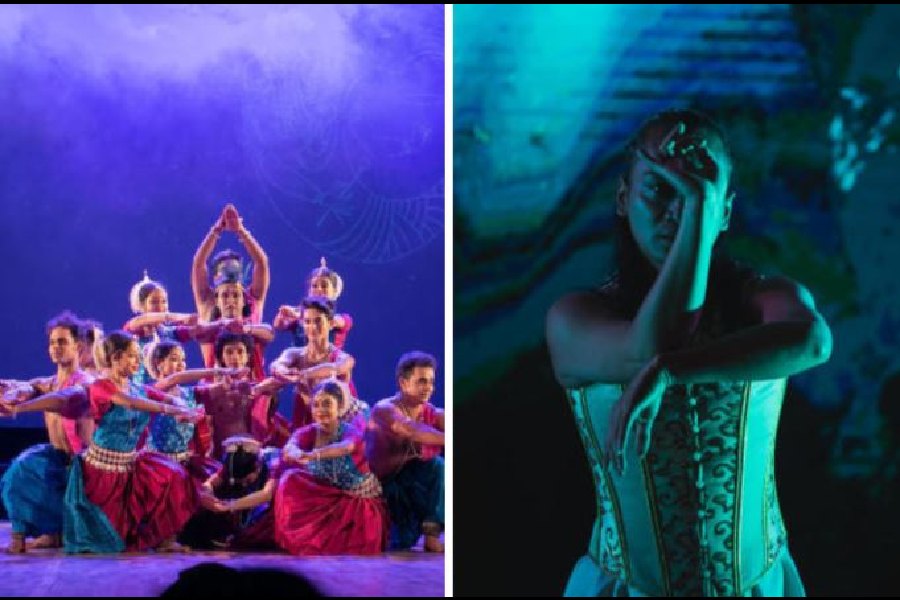Textured choreography with some hypnotic moments of lively, visual storytelling through accents, gestures and details made Geeta Mahatmyam (picture, left) by the choreographer, Aruna Mohanty, a fascinating experience. Presented by the Kolkata Mayur Lalit Dance Academy at Rabindra Sadan recently as a part of its annual show, the work attempted to imagine the varied verses of the Bhagavad Gita in a spectacular manner.
Some of the core concepts of the Gita’s text and their impact on the country’s philosophical thought processes filled the 50-minute dance piece with many thrills for the audience. The engaging ensemble choreographies had a lot of exciting moments as they embodied the letter of the text in which Krishna addresses Arjuna and explains to him the fundamental ways of the world and the tenets of transcendentalism. Even if the stories were told simplistically, they were rich in imagery created through dazzling duets and surging choric movements. Moving architectures were made in Mohanty’s signature style, oftentimes with a large number of dancing bodies, quick and alert, in tight choreographic patterns.
The explorations included Dashavatar, the uniquely evocative study of the philosophy of the return of Krishna, time and again, in different forms to restore the balance of good and evil in the world. The idea of doing what one feels is right without thinking of the results is another of the thoughts propounded by the Gita. This segment was explored, somewhat unexpectedly, through Mahatma Gandhi’s choice of the path of ahimsa.
The vision of the world, as seen by Arjuna, evoked the theory that the battle of Kurukshetra is not a literal war at all, but one that represents the battles within each one of us.
This may not have been the most layered of Mohanty’s works, but it did present some important thoughts of universal relevance. The eclectic music seemed a little jarring in parts — a commonplace Krishna bhajan makes its place in the soundscape of the work, among other songs — but in the end, it was the stellar dancing by Mohanty’s troupe, the Orissa Dance Academy, that stayed on in the mind.
The latter part of the evening was dedicated to the Odissi dancer-choreographer, Debamitra Sengupta, and her students’ presentation, Balya Leela.
Moving Stillness (picture, right)was an immersive, multi-sensoryvirtual reality dance experience presented by the Kolkata Centre for Creativity in collaboration with the Singapore-based Maya Dance Theatre and Avventura. It opened a window into the metaverse that perhaps holds within it the future of dance and movement arts. It took one a step beyond merely watching dance as one was experientially engulfed by a sea of debris as an effect of plastic pollution. Co-choreographed by Rianto and Kavitha Krishnan in a stereoscopic, 180-degree VR format, the piece was based on an Asian traditional dance practice. It focused on structure, rigour, rhythmic cycles, intricate gestural language and positions, all of which delicately negotiated the state of stillness through the moving body.
The 10-minute work made it appear as though time stood still as one was transported into a meditative realm in which one witnesses the spirit of the ocean, played by Rianto. He glided, swirled, and traversed through space with a measured slowness that situates one in a liminal, trance-like state. The tranquility also added a surreal quality to the experience as one engaged with the serene grace of the dance.











